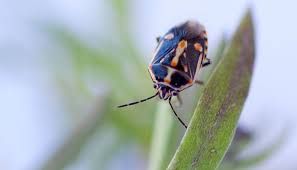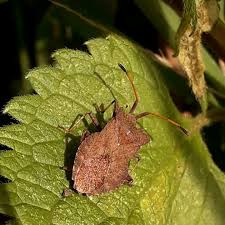In the summer of 2016, thousands of gardeners across the world took part in The Big Bug Hunt, an international citizen science project that aims to track and identify garden pests. This initiative is set to become a valuable early warning system for pest outbreaks. In the United States, the Japanese beetle was the most commonly reported pest, while in the UK, slugs triggered the highest number of reports. The project gave gardeners a unique opportunity to report both common and uncommon insect sightings, contributing to an exciting and growing database of pest activity. Below, we explore some of the lesser-known and intriguing insects encountered during the hunt.
Uncommon Pests in the Garden
One of the first unusual sightings reported was a bagrada bug, found munching on kale in Riverside, California. This invasive species, also known as the Painted Bug of Africa, has started to pose a serious threat to cabbage family crops in the Southwest. The bagrada bug, about the size of a watermelon seed, is easily recognized by its orange markings. While sweet alyssum can serve as a trap crop to attract and manage them, chickens are also known to enjoy eating these pests. This new pest warrants ongoing monitoring, as its presence may grow in future seasons.
The brown marmorated stink bug, already under surveillance for its destructive nature, has spread further from its original eastern range. While it had mostly been reported in the eastern U.S., it is now showing up in Michigan and even on the West Coast. Not only do these pests invade homes during the colder months, but their increasing presence in gardens is cause for concern. A gardener in West Virginia recently discovered stink bug eggs on lemon balm, which could signal future damage to plants.

Another strange pest to appear on the radar was the three-lined potato beetle, reported by a gardener in Massachusetts who found it feasting on his tomatillos. The larvae of these beetles are peculiar in that they resemble tiny slugs, but they cover themselves with sticky excrement to deter predators. These beetles exclusively target plants in the nightshade family, such as tomatillos, making early intervention crucial for controlling their spread.
Bigger Bugs and Fascinating Discoveries
Some large insects were also reported during the hunt. A gardener described a moth that resembled a cross between a hummingbird and a bee, with a body that curved in an intriguing way. This was identified as a hummingbird moth, known for its ability to hover and feed on nectar. Another large fly, the mydas fly, was described as “huge and black with orange marks on its sides.” These flies, despite their intimidating appearance, are beneficial as they are believed to feed on smaller insects.
Among the most surprising discoveries was a caterpillar feeding on leaves from a lime tree in Florida. Known as the orange dog, this caterpillar camouflages itself to look like a bird dropping, protecting itself from predators. It eventually matures into the giant swallowtail butterfly, a striking and impressive creature.

Insects Beyond the Vegetable Garden
The Big Bug Hunt also raised awareness of insects beyond the vegetable garden. Reports came in of Eastern-eyed click beetles found on tree trunks, ash bark beetles encountered while hiking in Ohio, and colorful locust borers emerging from firewood in Tennessee. These sightings demonstrate how the project is expanding participants’ understanding of insects in their broader environment.
The Big Bug Hunt is more than just a data collection tool; it is encouraging people to take a closer look at the insects around them. By identifying and tracking these creatures, gardeners and scientists can work together to monitor the spread of pests and better manage garden ecosystems in the future. The project is helping to foster a deeper appreciation for the vital role insects play in our world.

